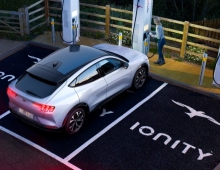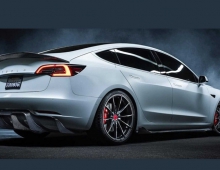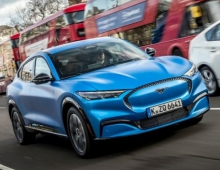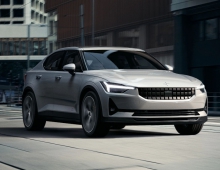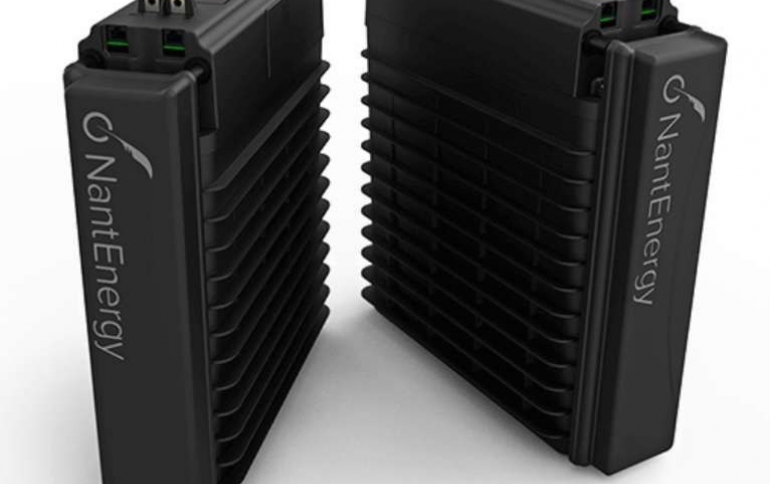
Rechargeable Zinc-based Batteries Could Mean Safer, Lighter Cars and Smartphones
With lithium-ion battery technology perhaps approaching its own Moore’s Law ceiling, researchers are pursuing technologies like aluminum- and zinc-air batteries that are just now entering the market.
The race to dominate the electric car market hinges as much on battery technology and improved recharging infrastructure. Tesla is currenty the industry leader in the field, in terms of battery technology and manufacturing capacity. But nearly all of the capacity is focused on lithium-ion technology.
Other approaches are also emerging that promise to change the battery technology landscape to extend the range of electric vehicles.
Researchers claim that not only could rechargeable zinc-based batteries possibly store as much energy as lithium-ion batteries, they could also be safer, cheaper, smaller and lighter. They suggest zinc batteries could find use in mild hybrids (microhybrids), electric vehicles, electric bicycles, and eventually, perhaps smartphones and power grid storage.
The researchers are now aggressively testing these batteries and exploring scaling up this technology. "We feel we can have a battery ready for the market by the end of 2019," says Michael Burz, CEO of energy technology firm EnZinc in San Anselmo, Calif., which helped engineer the new batteries.
When it comes to electric vehicles, the new batteries will "be 30 to 50 percent cheaper than comparable lithium-ion systems," Burz says.
Zinc-based batteries do not pose the same fire risk linked with lithium-ion batteries, and can in principle match or surpass them in terms of specific energy (energy per unit mass), as well as energy density (energy per unit volume). Moreover, zinc is cheap and widely available.
However, zinc-based batteries "are not considered rechargeable in practice due to their tendency to grow conductive whiskers—dendrites—inside the battery, which can grow long enough to cause short circuits," says Debra Rolison, head of the advanced electrochemical materials section at the U.S. Naval Research Laboratory in Washington, D.C., and one of the researchers involved in the zinc breakthrough. As such, zinc-based batteries typically die after several cycles of discharging and recharging, she explains.
Now Rolison, Burz and their colleagues have developed a zinc-based battery whose internal structure can suppress dendrite formation. The zinc anode has a porous, sponge-like architecture that helps charge move uniformly across the entire structure when the battery discharges and recharges.
The zinc anodes are currently made by drying zinc emulsions in cylindrical molds overnight and baking the resulting disks in a furnace for a few hours. “It's like we're baking muffins,” Burz says.
The researchers paired this zinc anode with a nickel cathode. Their experiments revealed the battery could withstand more than 50,000 brief cycles of discharging and recharging, similar to how lead-acid batteries are used in a start-stop manner in microhybrid vehicles. In addition, such a battery could deliver the same amount of energy in a smaller mass and volume.
Their experiments also suggested that a rechargeable zinc battery could meet the 24 kilowatt-hour demands of the Nissan Leaf in a smaller, lighter package.
All in all, this work "offers the energy of lithium-ion batteries but at the cost of lead-acid batteries, and it's also safer, recyclable, and uses an abundant material," Burz says.
The researchers note the zinc anodes can take practically any shape desired.
EV battery race
While lightweight, compact zinc- and aluminum-air batteries could provide backup power to electric cars, Tesla continues to ramp up lithium-ion battery production at its Gigafactory in Nevada and a planned battery factory in China — Tesla and battery partner Panasonic claim about 60% of global electric vehicle battery output. Chinese rivals like Contemporary Amperex Technology Ltd. (CATL) are also pouring billions into an effort to become China’s Panasonic.
Besides the high capacity, an EV battery should be charged quickly, with a goal to make them charge as fast as filling a gas tank.
The U.S. Energy Department’s Oak Ridge National Laboratory announced in October that researchers have demonstrated a 120-W wireless recharging system for electric vehicles. Oak Ridge engineers claim six times the power of previous wireless charging technology, representing what the lab asserts is "a big step toward charging times that rival the speed and convenience of a gas station fill-up."
Oak Ridge researchers demonstrated a 20-kW wireless charging system that is being modified for applications like delivery trucks.
The next step is scaling the power transfer level to 350 kW while exploring "dynamic wireless charging schemes" in which wireless charging pads installed under a roadway could automatically charge electric vehicles.
“The goal is dynamic charging at highway speeds,” said Veda Galigekere, project leader at the lab’s Power Electronics and Electric Machinery Group.


